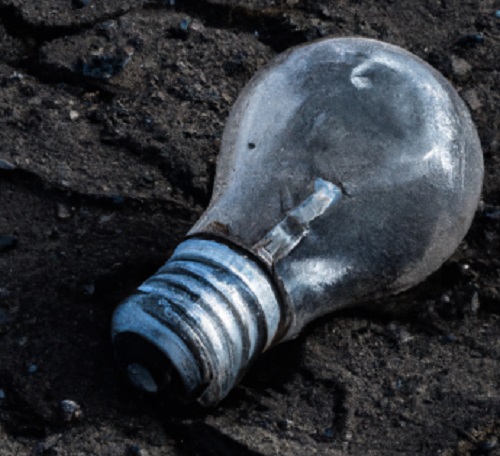Energy
Achtung: Learning from Germany’s energy shambles: Terry Etam

From the Frontier Center for Public Policy
By Terry Etam
No one interviews mechanics about the challenge of an energy transition. In fact, the voices of the many that maintain the system get accused of disinformation for pointing out mechanical realities like “That isn’t gonna work.”
In 1880, a great author, Mark Twain, whom you may never hear spoken of again because he had the audacity to write in the vernacular of the day, wrote an extremely funny essay called The Awful German Language. “Surely there is not another language that is so slipshod and systemless, and so slippery and elusive to the grasp…There are ten parts of speech, and they are all troublesome…Now let the candidate for the asylum try to memorize those variations, and see how soon he will be elected…In German, a young lady has no sex, while a turnip has…a tree is male, its buds are female, its leaves are neuter; horses are sexless, dogs are male, cats are female-tomcats included, of course; a person’s mouth, neck, bosom, elbows, fingers, nails, feet, and body are of the male sex, and his head is male or neuter according to the word selected to signify it…My philological studies have satisfied me that a gifted person ought to learn English (barring spelling and pronouncing) in thirty hours, French in thirty days, and German in thirty years.”
I have no idea if his synopsis is sound, but I do know it is funny as hell and it comes leaping to mind upon any contemplation at all of Germany’s current energy mess. I can’t think of a better turn of phrase than to describe it as slipshod and systemless and slippery and elusive to the grasp.
The lunacy began more than a decade ago, but it took a few years before serious consequences started to appear. They are here now, in full force. Primary among them was the decision to shut down all nuclear power in the country with no suitable base load replacement other than… coal, the last imaginable energy source one could imagine Germany purposely pursuing after a decade of their energy transition shouting. In what had to have been a staggeringly embarrassing moment, the German government even went as far as destroying a village to expand a coal mine. In 2023, not 1923.
To be fair, Germany’s energy demise was hastened by the Russian war and subsequent loss of Russian gas (and to be even more fair, I recognize that as a Canadian I have absolutely no moral high ground to ridicule anyone else’s government). As The Economist put it: “By weaponising the natural gas on which Germany’s mighty industrial base relies, the Russian president is weakening the world’s fourth-biggest economy and its third-biggest exporter of goods.”
But that was an accelerant, and not the match. For more than a decade, Germany has been not just turning away from fossil fuels faster than possible, it has fed mightily into the global narrative that fossil fuels were last century’s news. The overarching anti-hydrocarbon stance, that to maintain a cent in any fossil fuel investment was to risk good money on soon-to-be ‘stranded assets’, has been allowed to take over the public discourse as a fact, with no opposition from even the likes of those now in a very bad spot for allowing these concepts to take root as modern energy givens.
The German war on hydrocarbons is all the more peculiar because of the way in which the country has wrapped almost its entire industrial strategy around them. A physicist named Shaun Maguire outlined it well on Twitter, and thank heavens for people with weird fascinations. (@shaunmmaguire: “I’ve been obsessed with the chemicals industry since I was a kid.”)
Mr Maguire wrote an illuminating thread on Germany’s economy and its relationship to both energy and chemicals (an epic quote right off the top: “Germany’s decision to shut down their nuclear facilities was one of the stupidest political decisions in history. Most of their economy is based on turning energy into chemicals.”).
A profile of Ludwigshafen points out some startling facts. First, the place is enormous. BASF, the massive chemical company, has a ten square kilometre facility in the city with its own transit system.
Ludwigshafen consumes about as much natural gas as Switzerland. The output from Ludwigshafen, per BASF’s website, supports: Agriculture, Automotive/Transportation, Chemicals, Construction, Electronics/Electric, Energy & Resources, Furniture & Wood, Home Care and Industrial/Institutional Cleaning Solutions, Nutrition, Packaging & Print, Paints & Coatings, Personal Care/Hygiene, Pharmaceuticals, Plastics & Rubber, Pulp & Paper, and, finally, Textiles, Leather & Footware. The website has pull-down menus for each category that outline a dizzying array of pretty much everything you’ve ever laid your hands on that wasn’t breathing, photosynthesizing, or dug out of the ground.
Those huge natural gas pipelines flowing into Germany are the very lifeblood of German industry, as much or more so than anywhere else. In many places, without natural gas people would simply freeze. In Germany, they would freeze in many square miles of abandoned petrochemical factories. Sure, it would be steampunk-cool way to go, but other than that there would be nothing aesthetic about it.
Last year, I stood slack-jawed in wonder at news that Germany had constructed an LNG import terminal in 5 months flat (an LNG-Importeinrichtung – feminine). How on earth… it takes a year to get a permit for anything in the western world. How could they build her so fast?
Now I know. They had to. The bedrock of Germany’s mighty industrial base depended on it.
There are no grounds for entertaining the thought that Germany is incapable of designing, building, and operating an optimal energy system. It is crazy to think otherwise; Germany is collectively a formidable engineering talent.
Yet it is equally crazy to shut down a bunch of nuclear reactors with no suitable backup base load power (and remember, the nuclear plants were put on the boat to Valhalla before Russian antics).
Some of Germany’s current energy plans are equally as crazy, such as being short of power and simultaneously activating a mass conversion to electrical heat pumps. Whatever you do in an electrical grid, the one thing you don’t want to do is increase demand peaks. An overarching goal should be to reduce them, because the highest possible load, the point of maximum demand, sets the capacity need for the entire system. If on the coldest, highest demand day of the year, a system needs 1,000 units, it needs to be built and maintained to provide 1,000 units, even if the average demand is only half that.
Germany’s heat pump rollout plan is a scheme that will do exactly the wrong thing. It will significantly increase demand at the exact worst time. It is like taking the example above and resetting the peak to 1,200 units, even if the average remains at 500. The entire system now needs to be able to provide 1,200 on demand.
What happens if it doesn’t? Well, what do you think happens if there is a power failure during the coldest snap of the year, when wind and solar output are low, or if reliance on wind/solar is too great and they can’t perform? It will be catastrophic.
So you might be driven to madness trying to unravel this knot, because on the face of it Germans can’t both be engineering-competent and simultaneously run their energy system into the ground.
The answer to this impossible scenario, how such a contradiction can exist in reality, is due to two things: the politicization of the energy system, and the failure of that energy system to explain and defend itself.
Politics, as we know, is where logic goes to die. Popularity means power; and you can gain popularity in general by keeping citizens happy (hard to do, always something to complain about), or by terrifying them. It should not be a surprise that out of that swamp (one rude Trump-derived nomenclature that I can’t disagree with) comes a plethora of committees and committee decisions made by people for whom reality will always be steamrolled by the quest for popularity (there are exceptions that prove this rule, showing up about three times per century somewhere on the globe).
Thus we get governments fighting to eliminate hydrocarbons for political reasons; because they want to be seen as ‘being on the right side’, and because one side has been so much better at it (more on that in a second), being ‘an environmentalist’ is now colloquially equivalent with being anti-hydrocarbon.
Stuck in the middle of the fear mongering are the plumbers, the farmers, the mechanics, the drivers, the people that actually keep the wheels turning, the ones with their feet grounded in reality and not in armchair-industrialism. Included in that camp are the ones that check the valves and drill the wells that keep the world’s fuel flowing. Others can argue about what it will look like in 40 years, but for the hands-on people, the story is all about today.
But those voices get lost in the noise storm. No one interviews mechanics about the challenge of an energy transition. In fact, the voices of the many that maintain the system get accused of disinformation for pointing out mechanical realities like “That isn’t gonna work.” Capable, knowledgeable people that point out the rising risks of an unreliable electrical grid are shouted down as ‘fossil fuel shills’ or agents of misinformation.
Sadly then, we are forced to live with these pile-driving spasms of bad decisions as part of a political process, democracy, that most would never abandon. And hey, it’s not easy for participants either – Imagine the chaos between the ears of German Chancellor Olaf Scholz, coming to Canada seeking more LNG, then sitting at a press conference listening to Justin Trudeau say there is no business case to be made for LNG to Germany, and being unable to speak against such gibberish because Climate, knowing full well he would go to another country to get an assured supply (and he did, Qatar).
One can’t help but summon sympathy for Mr. Twain’s German-themed bewilderment when hearing what has happened thus far in 2024. Germany recently approved $44 billion in new expenditures to build brand new gas-fired power plants (pacifying their supporters by declaring that the plants must be able to burn hydrogen and are ‘expected to’ do so by 2040 – not hard to spot the weasel words, is it). Note that new natural gas power plants can not be blamed on Russia, because this is just more consumption and not a replacement for supply. To rub salt in the Energiewende-wound, Bloomberg via Yahoo chimes in with the headline, “Germany’s Budget Chaos Leaves Green-Energy Projects in Limbo.” Seems that they found $44 billion for natural gas easily enough though. What was that transition stuff about, again?
Such mystifying behviour is at least partially explained by the second reason that energy system contradictions can exist – the dumbfounding size of the energy education deficit, and for that the hydrocarbon industry can at least partly look in the mirror, because the energy system has not done enough to explain and defend itself.
Consider Alex Epstein for example, a one-man energy-education army that has amassed a huge following. He’s written great books, and even appeared before congress, largely because he has taken the time and effort to point out the colossal benefits that hydrocarbons have brought humanity. Humanity as we know it wouldn’t exist without the hydrocarbon system, nor would most (or all) of the technological innovations we enjoy. Mr. Epstein spells this out, of his own accord, to far greater effect than the entire industry has in the past 30 years.
Many of those energy points are not hard to make, such as this foundational one that even Big Oil CEOs seem unable to articulate: “If one wishes to ascribe certain negative characteristics to hydrocarbon usage, it is only rational to consider the benefits that are derived from same.” And yet the opponents of hydrocarbons have done such a resoundingly thorough and effective job of amplifying any negativity that that simple statement is heard almost nowhere, except by Alex and a handful of others. Those earning massive pay stubs should be leading the charge, and they just aren’t. Not effectively anyway.
A general recognition of the boundless value of current fuels is coming; the question is, now much pain until that becomes commonly understood. The reality is that hydrocarbon usage continues to grow and set record consumption levels, including coal, and will for a long time. The evidence is pretty stark and clear, even for the likes of the IEA that predicts an imminent demise in hydrocarbon demand over and over and over, then keeps re-upping demand estimates as they happen.
A great number of innovative ideas are making their way to market that will start making inroads on how we deal with energy and industry. But until proven at scale, the existing system needs to be protected from frightened mobs, and someone needs to explain reality to them.
We all know what’s going to happen; an energy transition will happen over the next century at a realistic pace as new technology/nuclear/whatever becomes dominant. The challenge is: How much damage will be done before our elected representatives start choosing optimization, as opposed to whatever it is they’re doing now?
Terry Etam is a columnist with the BOE Report, a leading energy industry newsletter based in Calgary. He is the author of The End of Fossil Fuel Insanity. You can watch his Policy on the Frontier session from May 5, 2022 here.
Automotive
Federal government should swiftly axe foolish EV mandate

From the Fraser Institute
Two recent events exemplify the fundamental irrationality that is Canada’s electric vehicle (EV) policy.
First, the Carney government re-committed to Justin Trudeau’s EV transition mandate that by 2035 all (that’s 100 per cent) of new car sales in Canada consist of “zero emission vehicles” including battery EVs, plug-in hybrid EVs and fuel-cell powered vehicles (which are virtually non-existent in today’s market). This policy has been a foolish idea since inception. The mass of car-buyers in Canada showed little desire to buy them in 2022, when the government announced the plan, and they still don’t want them.
Second, President Trump’s “Big Beautiful” budget bill has slashed taxpayer subsidies for buying new and used EVs, ended federal support for EV charging stations, and limited the ability of states to use fuel standards to force EVs onto the sales lot. Of course, Canada should not craft policy to simply match U.S. policy, but in light of policy changes south of the border Canadian policymakers would be wise to give their own EV policies a rethink.
And in this case, a rethink—that is, scrapping Ottawa’s mandate—would only benefit most Canadians. Indeed, most Canadians disapprove of the mandate; most do not want to buy EVs; most can’t afford to buy EVs (which are more expensive than traditional internal combustion vehicles and more expensive to insure and repair); and if they do manage to swing the cost of an EV, most will likely find it difficult to find public charging stations.
Also, consider this. Globally, the mining sector likely lacks the ability to keep up with the supply of metals needed to produce EVs and satisfy government mandates like we have in Canada, potentially further driving up production costs and ultimately sticker prices.
Finally, if you’re worried about losing the climate and environmental benefits of an EV transition, you should, well, not worry that much. The benefits of vehicle electrification for climate/environmental risk reduction have been oversold. In some circumstances EVs can help reduce GHG emissions—in others, they can make them worse. It depends on the fuel used to generate electricity used to charge them. And EVs have environmental negatives of their own—their fancy tires cause a lot of fine particulate pollution, one of the more harmful types of air pollution that can affect our health. And when they burst into flames (which they do with disturbing regularity) they spew toxic metals and plastics into the air with abandon.
So, to sum up in point form. Prime Minister Carney’s government has re-upped its commitment to the Trudeau-era 2035 EV mandate even while Canadians have shown for years that most don’t want to buy them. EVs don’t provide meaningful environmental benefits. They represent the worst of public policy (picking winning or losing technologies in mass markets). They are unjust (tax-robbing people who can’t afford them to subsidize those who can). And taxpayer-funded “investments” in EVs and EV-battery technology will likely be wasted in light of the diminishing U.S. market for Canadian EV tech.
If ever there was a policy so justifiably axed on its failed merits, it’s Ottawa’s EV mandate. Hopefully, the pragmatists we’ve heard much about since Carney’s election victory will acknowledge EV reality.
Daily Caller
Trump Issues Order To End Green Energy Gravy Train, Cites National Security


From the Daily Caller News Foundation
By Audrey Streb
President Donald Trump issued an executive order calling for the end of green energy subsidies by strengthening provisions in the One Big Beautiful Bill Act on Monday night, citing national security concerns and unnecessary costs to taxpayers.
The order argues that a heavy reliance on green energy subsidies compromise the reliability of the power grid and undermines energy independence. Trump called for the U.S. to “rapidly eliminate” federal green energy subsidies and to “build upon and strengthen” the repeal of wind and solar tax credits remaining in the reconciliation law in the order, directing the Treasury Department to enforce the phase-out of tax credits.
“For too long, the Federal Government has forced American taxpayers to subsidize expensive and unreliable energy sources like wind and solar,” the order states. “Reliance on so-called ‘green’ subsidies threatens national security by making the United States dependent on supply chains controlled by foreign adversaries.”
Dear Readers:
As a nonprofit, we are dependent on the generosity of our readers.
Please consider making a small donation of any amount here.
Thank you!
Former President Joe Biden established massive green energy subsidies under his signature 2022 Inflation Reduction Act (IRA), which did not receive a single Republican vote.
The reconciliation package did not immediately terminate Biden-era federal subsidies for green energy technology, phasing them out over time instead, though some policy experts argued that drawn-out timelines could lead to an indefinite continuation of subsidies. Trump’s executive order alludes to potential loopholes in the bill, calling for a review by Secretary of the Treasury Scott Bessent to ensure that green energy projects that have a “beginning of construction” tax credit deadline are not “circumvented.”
Additionally, the executive order directs the U.S. to end taxpayer support for green energy supply chains that are controlled by foreign adversaries, alluding to China’s supply chain dominance for solar and wind. Trump also specifically highlighted costs to taxpayers, market distortions and environmental impacts of subsidized green energy development in explaining the policy.
Ahead of the reconciliation bill becoming law, Trump told Republicans that “we’ve got all the cards, and we are going to use them.” Several House Republicans noted that the president said he would use executive authority to enhance the bill and strictly enforce phase-outs, which helped persuade some conservatives to back the bill.
-

 Bruce Dowbiggin2 days ago
Bruce Dowbiggin2 days agoThe Covid 19 Disaster: When Do We Get The Apologies?
-

 Crime1 day ago
Crime1 day agoSweeping Boston Indictment Points to Vast Chinese Narco-Smuggling and Illegal Alien Labor Plot via Mexican Border
-

 Alberta2 days ago
Alberta2 days agoAlberta school boards required to meet new standards for school library materials with regard to sexual content
-

 Business16 hours ago
Business16 hours agoTrump slaps Brazil with tariffs over social media censorship
-

 Environment1 day ago
Environment1 day agoEPA releases report on chemtrails, climate manipulation
-

 International16 hours ago
International16 hours agoSupport for the Ukraine war continues because no one elected is actually in charge.
-

 Addictions18 hours ago
Addictions18 hours agoCan addiction be predicted—and prevented?
-

 Business19 hours ago
Business19 hours agoCBC six-figure salaries soar




